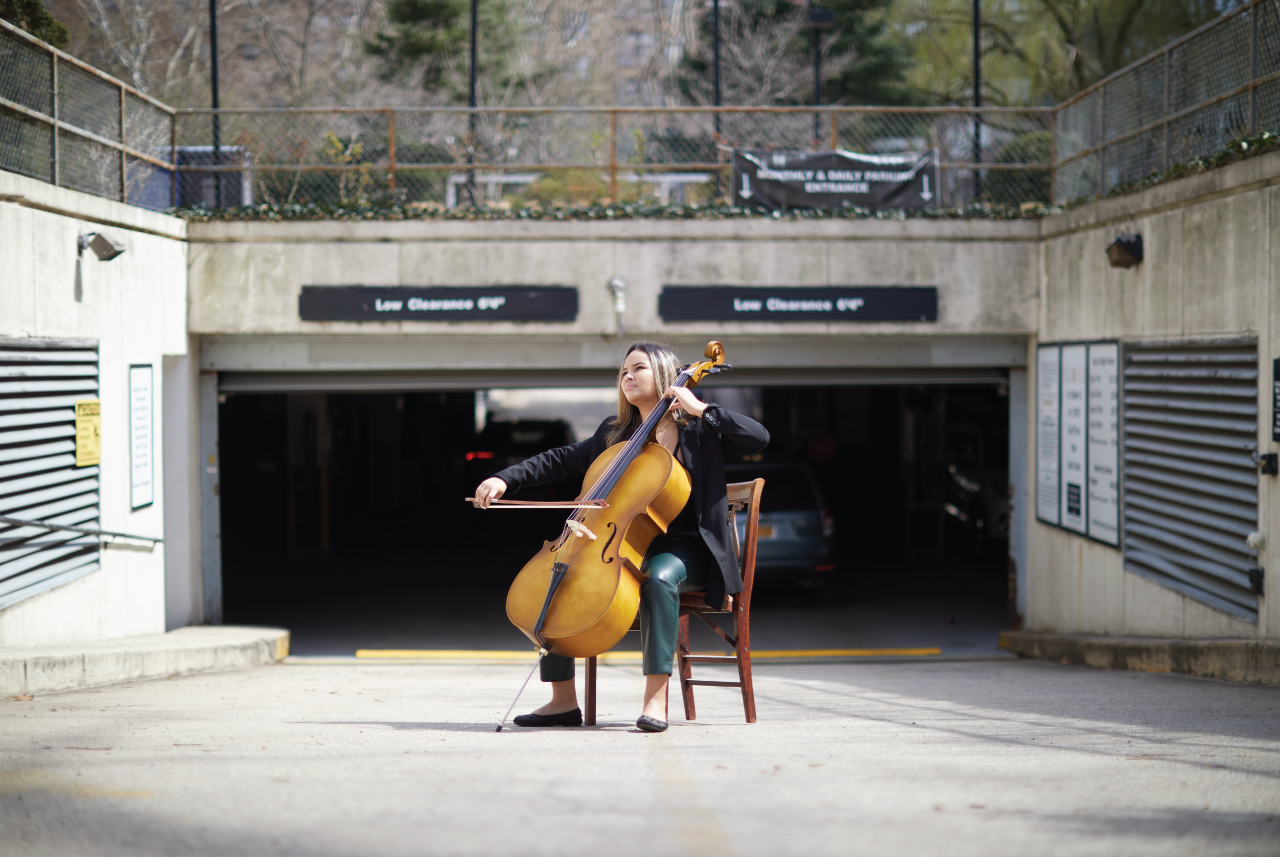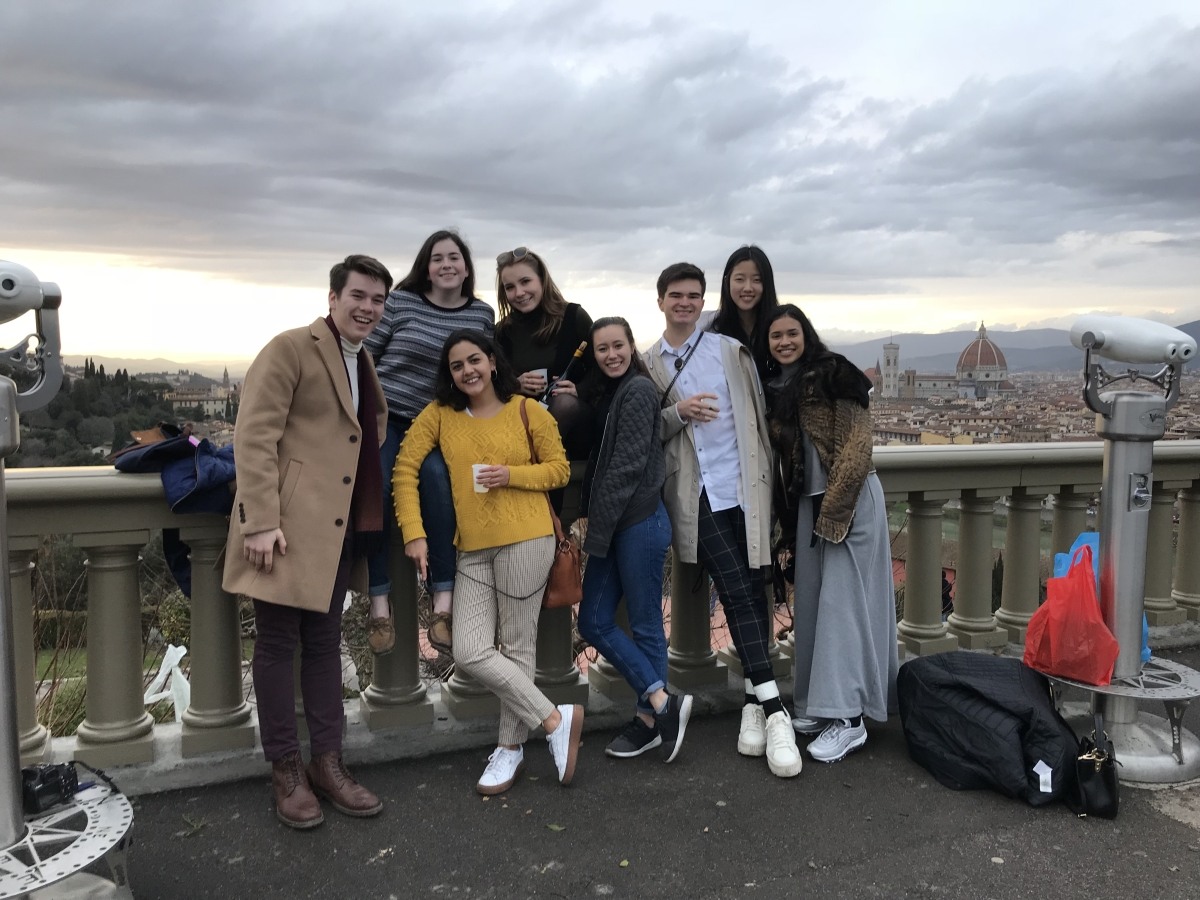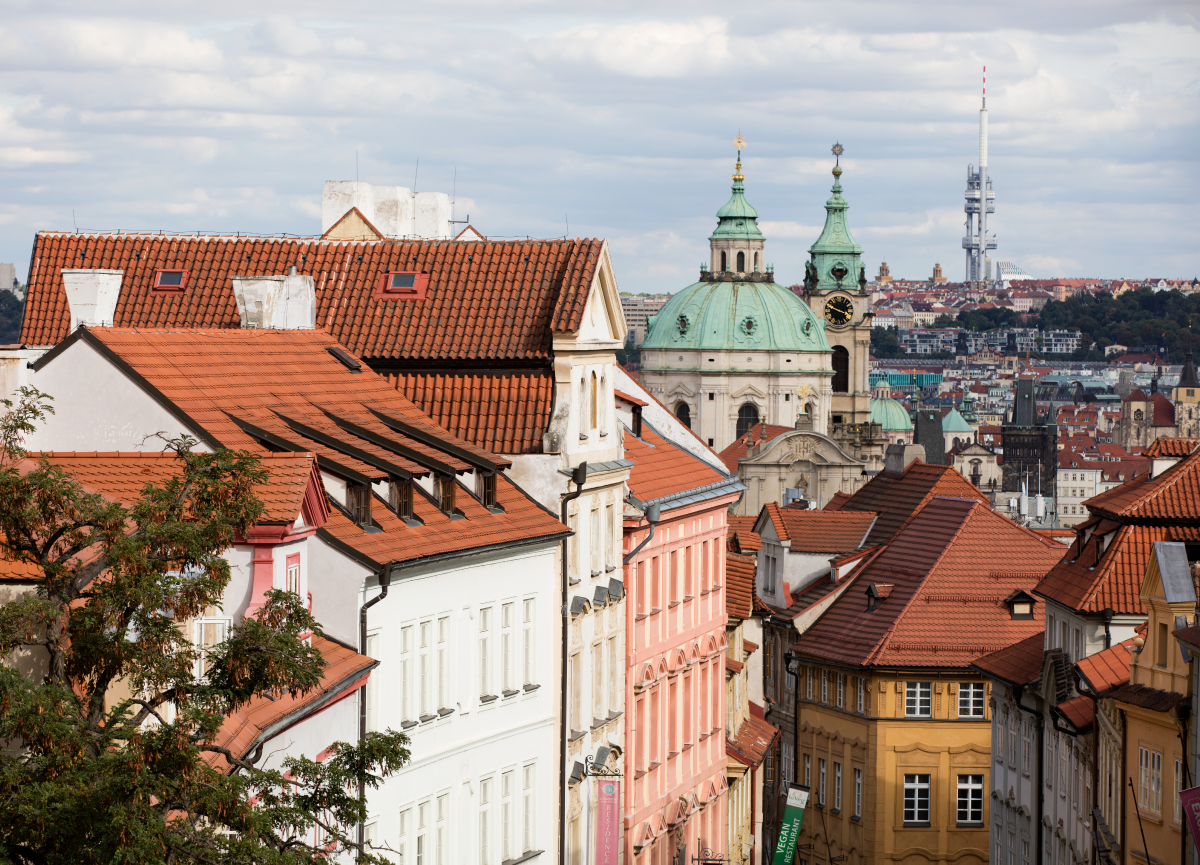
Taking in Prague’s skyline, it’s easy to understand why it’s known as the City of a Hundred Spires—though the actual number of spires is closer to a thousand. Today, the center of this medieval city appears virtually the same as it did over 200 years ago. “I love the Old Town of Prague,” says Luca Berti, an Instrumental Performance major focusing on string studies who is studying away at NYU Prague. “I love the architecture here. There’s a stark contrast between the modern and the old—the communist, brutalist architecture and the medieval, 13-century buildings. It’s really cool.”
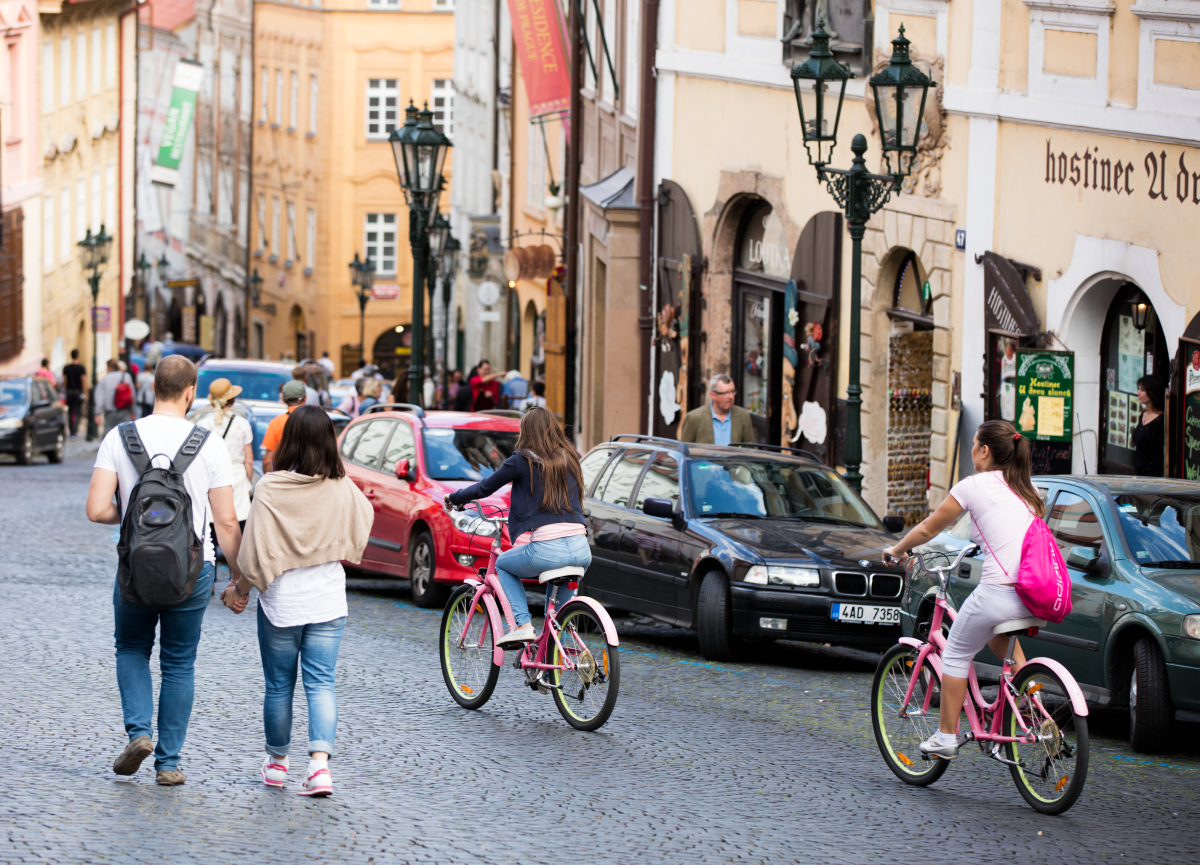
Over the years, Prague has experienced invasions, uprisings, and floods. But today, it’s emerged as one of Europe’s most charming cities. From its cobblestone streets to its colorful town houses, it’s a paradise for pedestrians and cyclists alike. “I love Czech outdoor culture,” affirms Luca. “It’s so fun and healthy. Here, it can be a Tuesday at noon, and if it’s sunny out, every single person is taking a walk.”

Winters in Prague can be cold and damp. However, the city’s many cozy cafes provide a perfect respite. Order a coffee, sit, study, and sip. Plus, in the warmer months, many cafes offer sidewalk seating.

With its iconic skyline and complex past, Prague is an ideal place to study art, architecture, and history. In fact, several NYU Prague faculty members played key roles in the Velvet Revolution, during which the Czechs and the rest of Central Europe overthrew the Communist regime. “The fact that everyone in the country worked together gives Prague this unified sense of place. It feels really welcoming,” explains Luca. “Everyone’s proud to be Czech. Even if you’re not taking Czech history classes here, you’ll learn about its history and customs.”
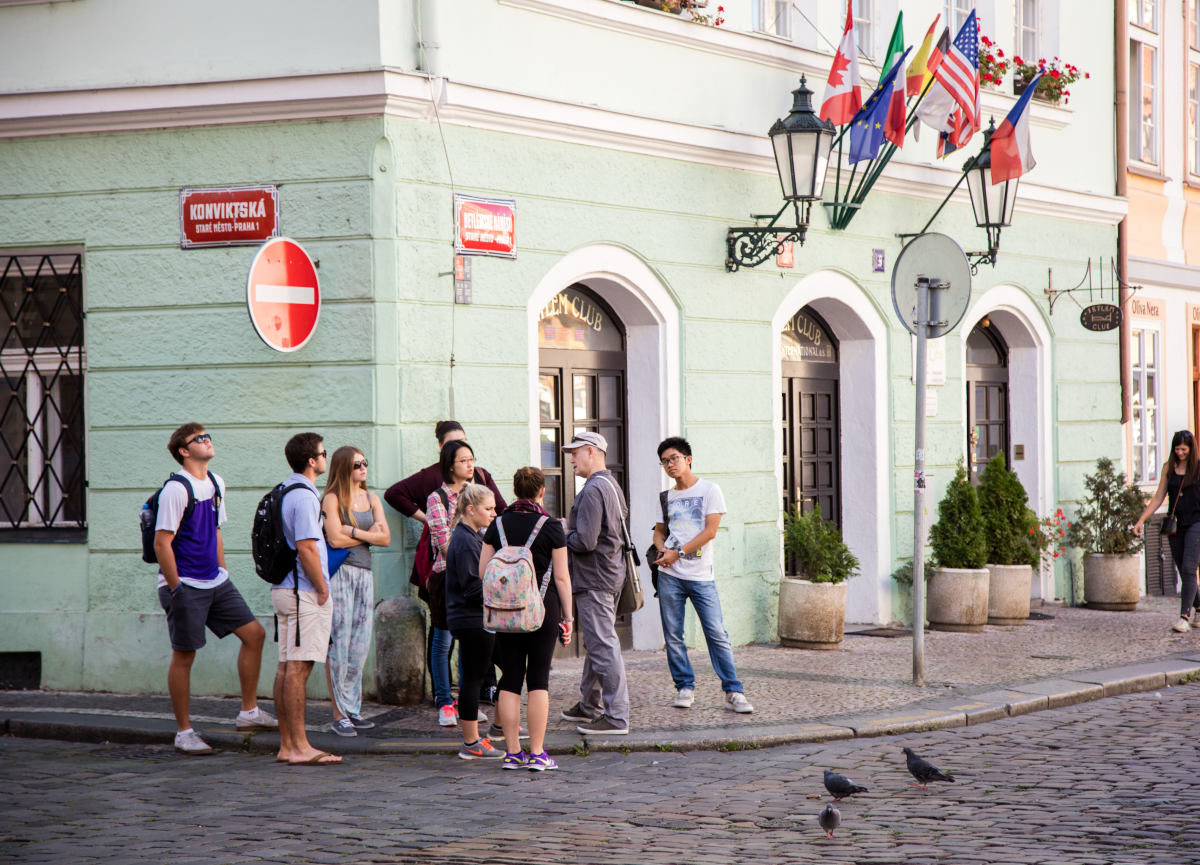
Given NYU Prague’s small class sizes and the city’s accessibility, professors take students on pedestrian-friendly tours of the Czech capital to learn about Prague’s history directly. In addition, students enjoy cooking demonstrations, attend concerts, go hiking, and more. Moreover, they go on numerous trips every semester, with recent excursions including volunteering with refugees, climbing Sněžka Mountain, and soaking in Karlovy Vary’s thermal springs.

In addition to its art, architecture, and history courses, NYU Prague offers subprograms in journalism, music, and film. Therefore, aspiring journalists learn from local journalists, former dissidents, and government leaders.
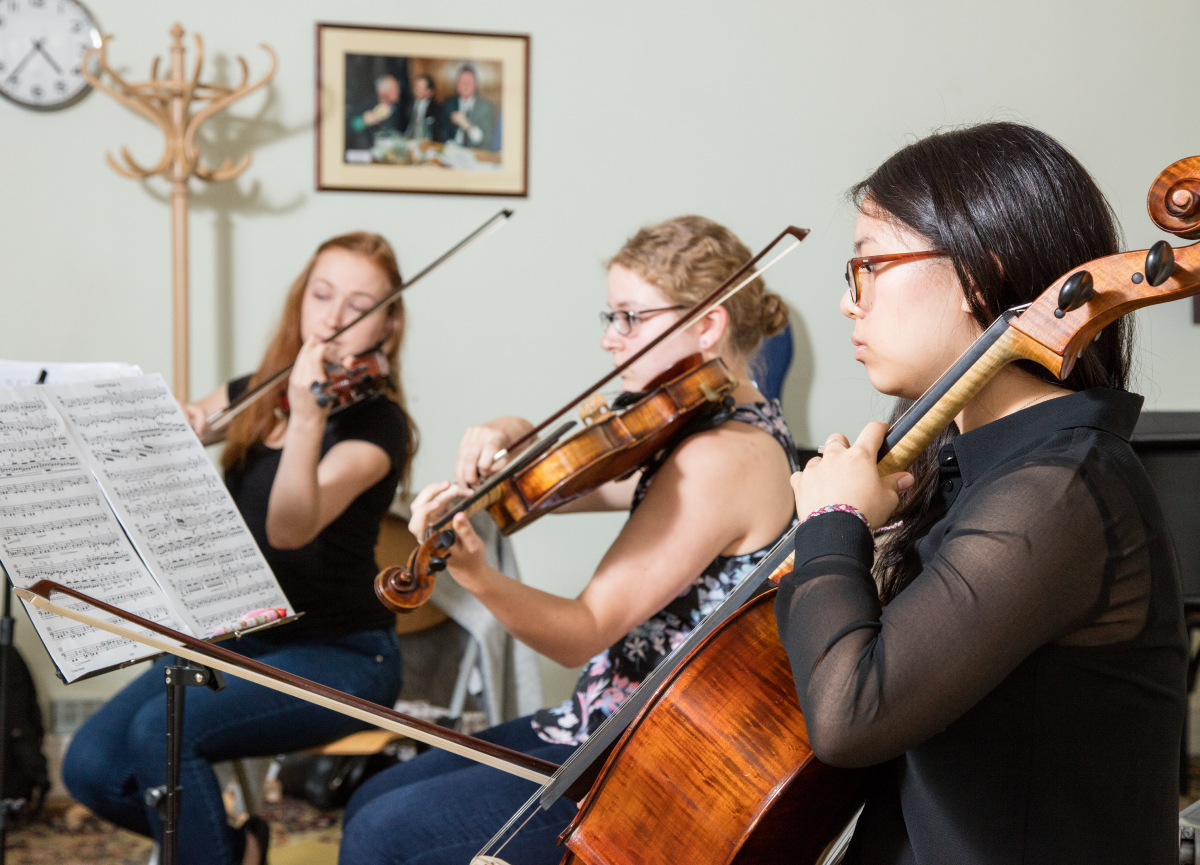
Prague boasts a rich musical history and is a hub for aspiring jazz and classical performers, making it an ideal place to study music. NYU Prague students enrolled in the music program attend concerts and symphony rehearsals and often collaborate with members of the Prague Conservatory and Academy of Performing Arts. “This week, we’re going on a private tour of the National Theatre, which is the pride and joy of the Czech Republic,” says Luca, a violist who is also minoring in Business of Entertainment, Media, and Technology. “We’ve had a quartet perform for us, and we’re seeing a Moravian folk band next week.”
